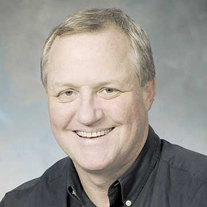Are We There Yet?
December 10-16, 2018
By Jay Edwards
jedwards@dailydata.com
Let’s pick back up from where I left you two weeks ago, with author Jon Ronson and his guide Brian the Scientologist, at Broadmoor Hospital in Berkshire, England, formally known as Broadmoor Hospital for the Criminally Insane. They are there to meet a man named Tony, who was committed after his trial for beating a man in a bar fight.
“The patients began shuffling in,” Ronson said. “They were all overweight, and wearing sweatpants and shirts, very docile looking. Brian the Scientologist leaned in close and whispered to me, ‘They’re medicated.’ And I thought, ‘well, that’s probably a good idea.’”
Then another man came in through the same door, but he looked different. “Very fit and wearing a tailored pinstripe suit,” Ronson said. “That’s Tony,” Brian the Scientologist whispered again.
After they were introduced, Ronson asked Tony, “So you faked your way in here?”
“Yes,” Tony answered. “When I was 17, I beat someone up and my cell mate convinced me I needed to ‘fake madness,’ which I did.”
Tony explained that he told the psychiatrist he got sexual pleasure from being in car crashes, which he had gotten from a movie called “Crash.” He also told the psychiatrist that he wanted to watch women when they died because it made him feel more normal. He got that one from a biography about Ted Bundy that they had at the prison library.
But Tony’s problem, he said, was “I faked it too well and they sent me here.”
He tried many times to tell them it’s all a big mistake, that he faked it and wasn’t really mentally ill. Ronson asked him how that was going and Tony said that if he had just pleaded guilty he would have gotten five years. He’d been in Broadmoor 12 years. “I found it’s much harder to convince people your sane than it is to convince them you’re crazy,” he said. “I’ve got the ‘Stockwell Strangler’ on one side of me and the ‘Tiptoe through the Tulips Rapist,’ on the other. So I tend to stay alone in my room a lot. But they take that as a sign of madness too, saying I’m aloof and grandiose.”
When Ronson returned home he called Tony’s psychiatrist, who told him, “We accept that Tony faked madness so he could get out of a prison sentence. But after testing him we’ve determined he’s a psychopath, because only a psychopath would fake being mad. It’s cunning and manipulative.”
“So faking your brain has gone wrong says to these doctors that your brain has gone wrong,” Ronson said.
Apparently the pin stripe suit wasn’t a good idea either.
Ronson was told by a clinician that to learn more he could take their “Psychopath Spotting Course,” which he did.
“I am now, and I’d have to say, an extremely adept, psychopath spotter,” Ronson said.
He learned, among other things, that one in every 100 regular people is a psychopath.
About a month later, Tony phoned him and asked why Ronson had not been returning his calls. “Well, they say you’re a psychopath.”
“But I’m not,” Tony said.
Tony’s tribunal, or parole board hearing, was coming up and he asked if Ronson would be there and he agreed.
“So I went,” he said, “and after 14 years in Broadmoor, they let him go.”
When the tribunal was over, they spoke in the lobby and Tony said, “You know Jon, everyone is somewhat psychopathic.”
“What are you going to do now?” Ronson asked.
“I’m going to Belgium. There’s a woman there I fancy, but she’s married so I’m going to have to get her to leave her husband.”
“So that’s where I left him,” Ronson said. “And that’s where my book ended.”
“Tony did pretty well for the next 20 months and I heard from Brian the Scientologist he was living with a woman outside London. Then he got into a little trouble, another bar fight, and had to spend a month in jail.”
“When he got out he called me and said he wanted to buy me a drink at a bar, to thank me for all I’d done for him. I said I’d meet him.”
“But I didn’t go. What would you have done?”



